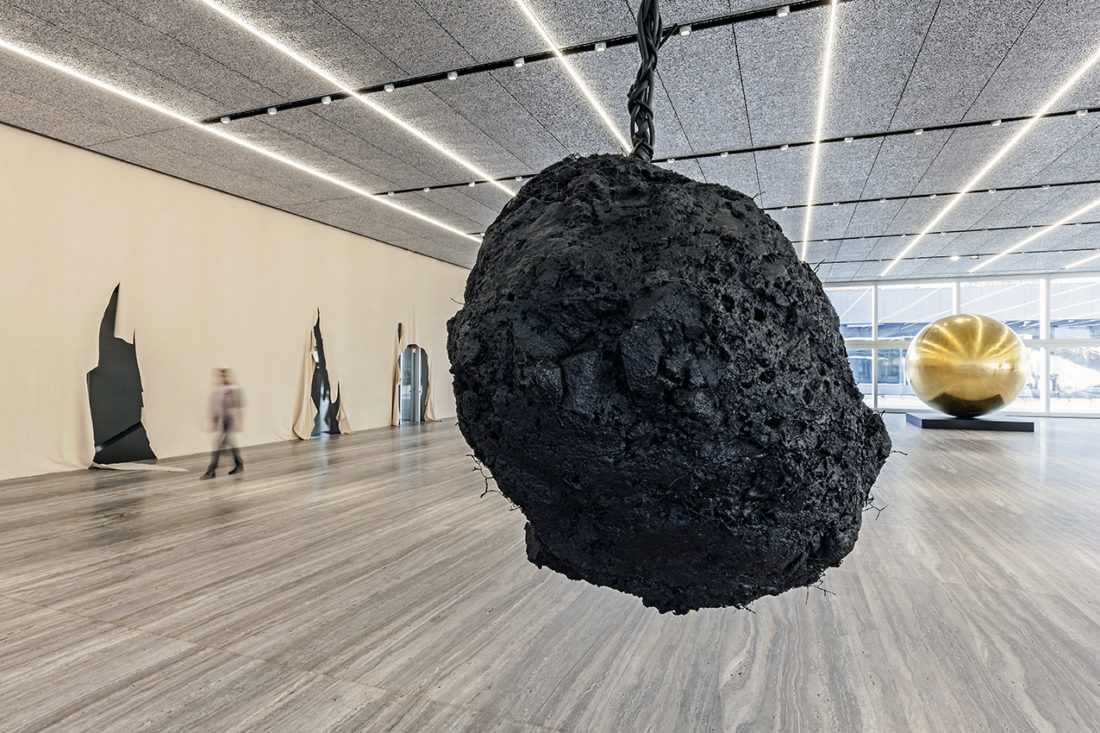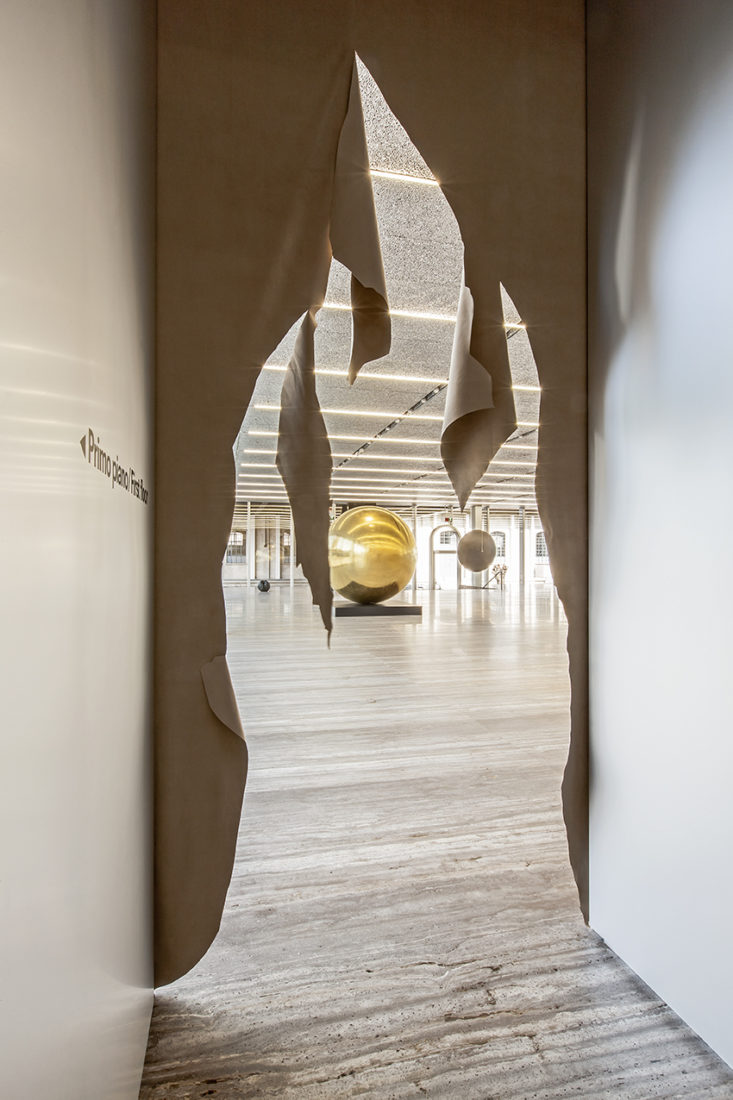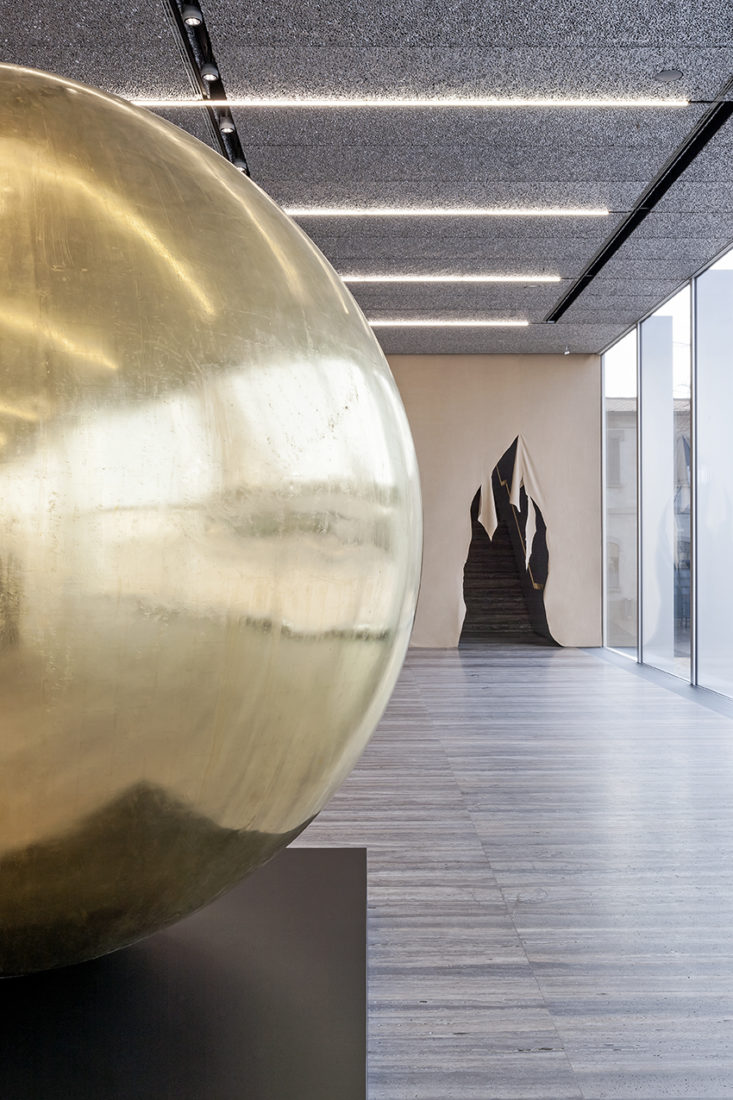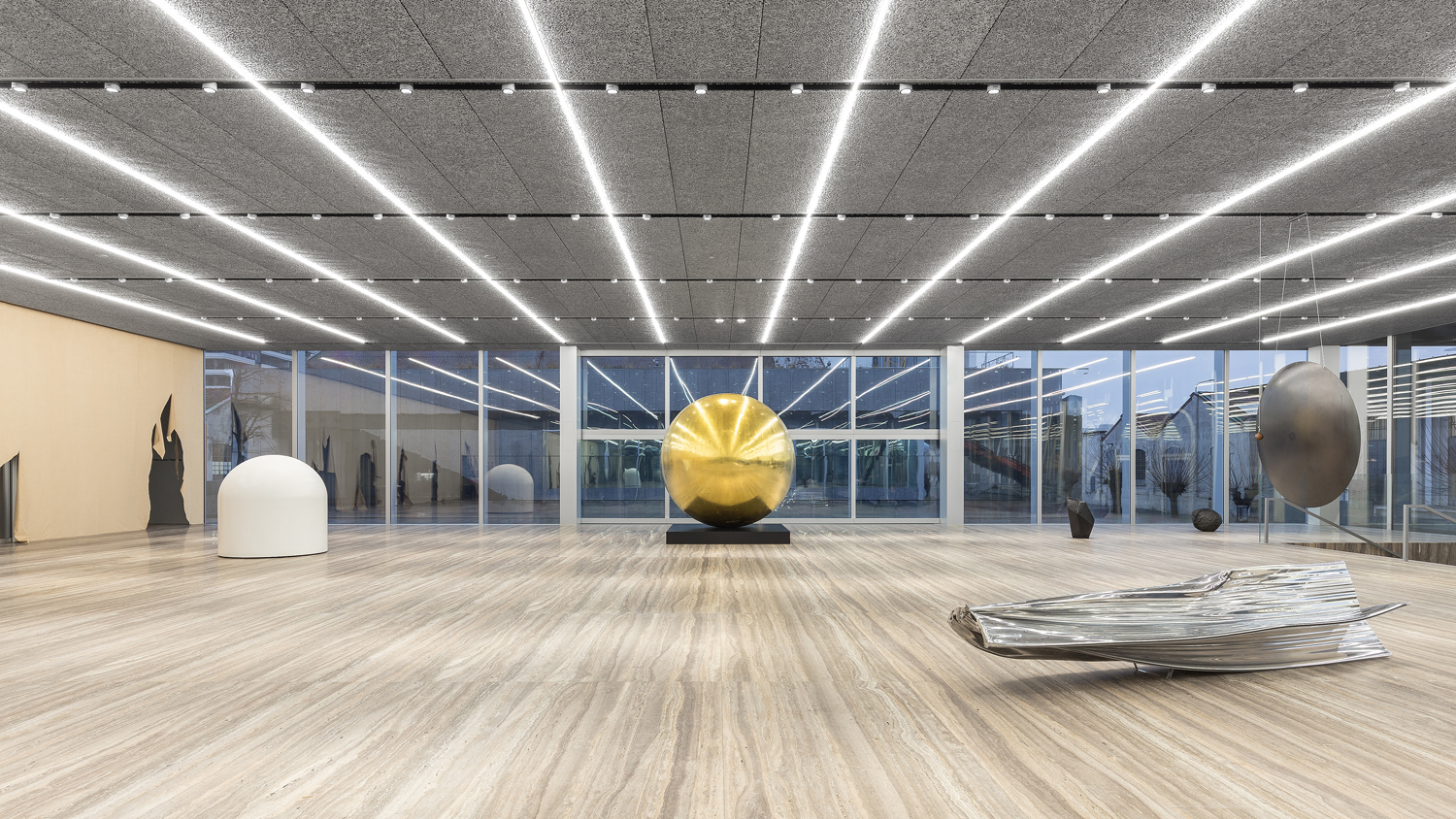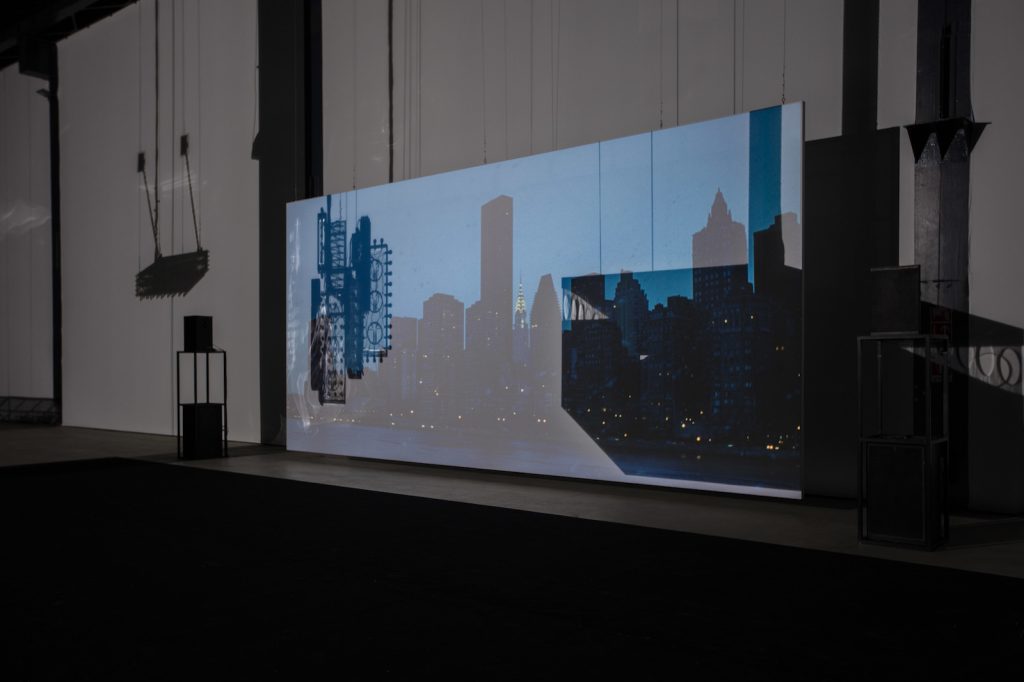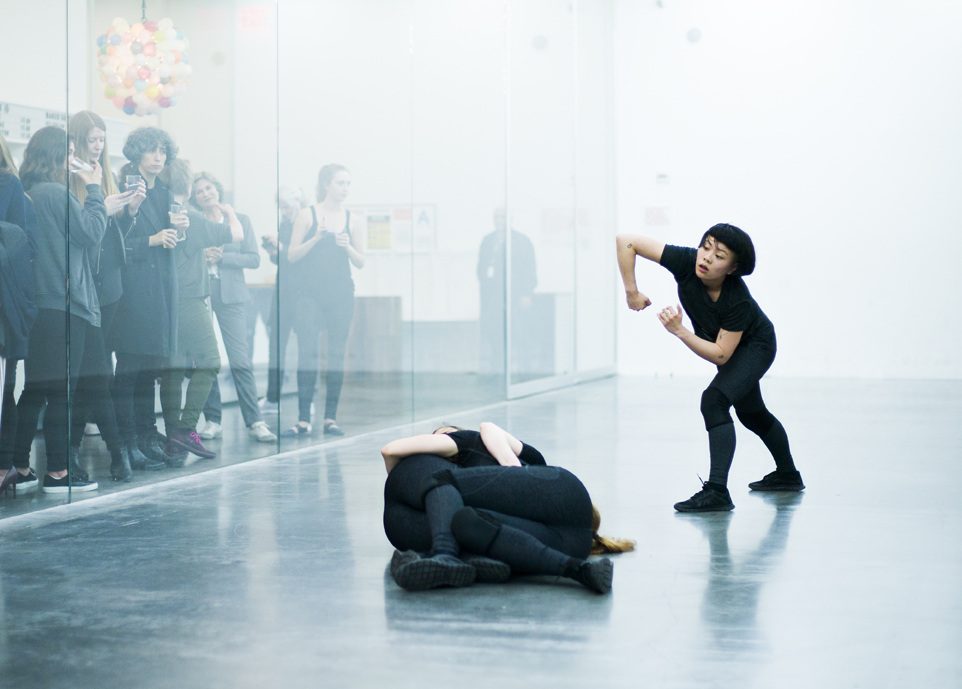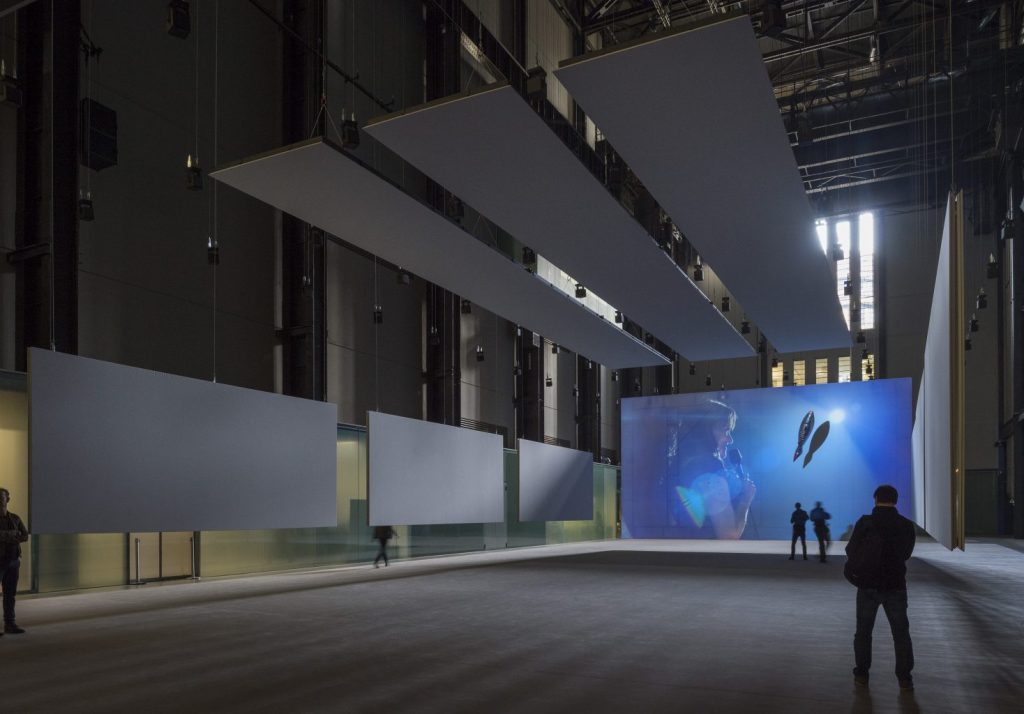Goshka Macuga ‘Negotiation sites’ after Saburo Murakami (2016), installation view at Fondazione Prada, Milan Photo: Pasquale Formisano Courtesy of the Artist; Fondazione Prada and Kvadrat
Goshka Macuga
To the son of the man who ate the scroll
Fondazione Prada, Milan
2016
“To the Son of Man Who Ate the Scroll”, developed by the artist for Fondazione Prada’s
spaces, brings together reflections on seminal issues such as time, beginnings and endings,
collapse and renewal. Observing humanity’s concern with the conclusion of mankind,
Macuga poses a fundamental question: how important is it to address the question of “the
end” in the context of contemporary art practice?
Our ability, as human beings, to conceive the universe abstractly and to imagine ourselves
objectively allows us a vantage point from which to view the age we are living in as one of
the many in our universe’s history, leading us to imagine an existence beyond ourselves, a
universe without humanity. In such an end-time scenario, some have speculated on the role
of technology and robots as potential contributors to humanity’s extinction and successors
to its dominance. The perfectly designed “man-made man” might eventually come to be the
greatest threat to its own creator and master. Technology’s potency is something that
humans have imagined, as feared and expressed throughout history with the creation of
mythological figures like Prometheus and literary characters like Frankenstein.
Macuga’s exhibition is the culmination of a lengthy period of in-depth research attempting to formulate a methodological categorization of material and information around such topics.
The artist looked at the art of rhetoric and artificial memory as intricately linked tools for the
organization and advancement of knowledge. Originating as a practice in Ancient Greece,
rhetoric was celebrated during the Renaissance period not only as a technique bolstering the
delivery of speech, debate and argument but also as a tool to organize ideas through the
architecture of knowledge and mnemonics. The Ars memorativa (the art of memory) set the
ground for artificial memory by expanding and developing natural memory through complex visualizations that would aid the recall of specific information.
The influence of this framework resonates through the inclusion of speech and reference to
mnemonics systems throughout the exhibition. The ground floor of the Podium becomes the
setting for an android created by Macuga and produced in Japan by A Lab. The android
recites/rehearses his monologue constructed from numerous excerpts of seminal speeches,
claiming himself to be a repository of human speech, though “who this knowledge is
preserved for is no longer clear”: in this scenario, in the time known by the robot, the human
perspective is no longer valid. The android is surrounded by a selection of large works from
the Prada Collection and significant museums around the world that evoke ideas of the cosmos, by artists including Phyllida Barlow, Robert Breer, James Lee Byars, Ettore Colla, Lucio Fontana, Alberto Giacometti, Thomas Heatherwick, and Eliseo Mattiacci, along with a new work, titled ‘Negotiation sites’ after Saburo Murakami realized by Goshka Macuga in collaboration with Kvadrat in Denmark.
OUR ROLE
South into North’s role in this project is part of our work consulting Kvadrat on their collaborations with artists and art institutions internationally.
SERVICES![]() Strategic Advising
Strategic Advising![]() Production
Production
